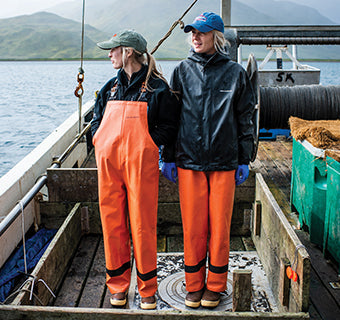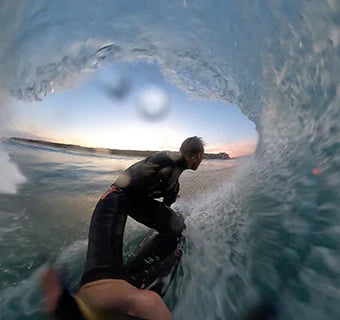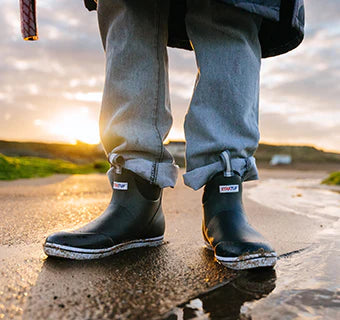RNLI x XTRATUF
How to stand up paddleboard safely
Looking for a fun activity that the whole family can enjoy whilst keeping fit? Stand-up paddleboarding (SUP) is rapidly gaining popularity. Here are our expert tips on how to paddleboard safely.

Paddleboarding is a great way to get active. This beginner-friendly activity has seen rapid growth in recent years and it’s no surprise given how beautiful the UK coastline and waterways are. Heading out for a paddle is great for core strength and general fitness, uses all of the muscles in our body and can be enjoyed by all of the family (including dogs!) However, any activity which involves the water should be planned for properly and with respect for the potential risks.
In 2023, 927 paddleboarders needed assistance from the RNLI after getting into difficulty. Please follow our guidance so you can stay safe in the water.
“Paddleboarding is a fantastic way to enjoy the water and stay fit, but it requires respect for the sea and proper safety measures. I always suggest paddleboarding on calm, windless days for the most enjoyable experience!” – Abby, RNLI LifeguardIn 2023, 927 paddleboarders needed assistance from the RNLI after getting into difficulty. Please follow our guidance so you can stay safe in the water.
Be prepared
You don’t need to be experienced to go paddleboarding, but to be safe on the water, it’s important to prepare. Taking the right equipment, understanding the risks and knowing what to do if you get into difficulty in the water can be lifesaving. Having this knowledge can also reduce any concerns you have, making your time on the water more enjoyable.
If you’re new to paddleboarding, why not check out the RNLI’s beginner’s guide to paddleboarding for top tips on how to get started.

Always check the conditions
“People often get into trouble due to lack of experience and awareness of local conditions, such as rip currents, tides, and weather changes. Offshore winds are a major reason why paddle boarders struggle to return to shore. These winds blow from land out to sea, making it extremely exhausting to paddle back.” – Abby, RNLI Lifeguard.
We love to see people enjoying the water, but only on days where it is safe to do so. Our first check should be looking at forecasting apps, to gage what conditions are going to be like for the entire time we plan to be on the water. It’s also essential to do another check before we get into the water. Remember that forecasting apps aren’t always correct and conditions are changeable.
Never paddle in offshore winds
If the wind is blowing from the land out to sea, find something else to do instead. Most of our call outs to paddleboarders are due to offshore winds blowing them away from the land. Offshore days can look calm and enticing, however it can be exhausting and extremely difficult trying to paddle against the wind. If you are on a lifeguarded beach, keep an eye out for the orange windsock, or speak to a lifeguard, to be sure you know which way the wind is blowing.
Be aware of weather, waves and tides
If it’s light winds and there’s no risk of being blown offshore, the next thing to check is weather, tides and waves. If the water is choppy, you may find it hard to stay on your board. Strong tidal currents may also make it difficult for you to paddle in the direction you’d like to go, so only go out when the tide will help you get back to shore.
When paddleboarding on rivers, heavy rainfall upstream can cause sudden surges in water levels and speed. Avoid these areas when there is a risk of this happening.

Understand the risks
Cold water shock and rip currents are two major risks for water users. Familiarise yourself with what they are and what to do if you’re caught out.
Having knowledge of these things and staying calm hugely reduces the impact of how dangerous they can be. Understanding the risks saves lives.
Seek out local guidance
If you’re new to the area or new to paddleboarding, always seek out lessons with a local paddleboarding business. Risks vary in different places and they will be able to provide you with must-have local knowledge before you venture out on your own.
Lessons are also a great way to become a part of the paddleboarding community and can help you to make friends to go on future adventures with.
If you’re a more confident paddleboarder, it’s still worth getting a second opinion, to confirm conditions are safe before you go out.
“I’d recommend getting a lesson with a qualified instructor, practice in safe, calm waters (which is always a lot more fun!) and never paddle alone. If you’re not sure whether the conditions are suitable, come and chat to the lifeguards and we’d be happy to help.” – Abby, RNLI Lifeguard
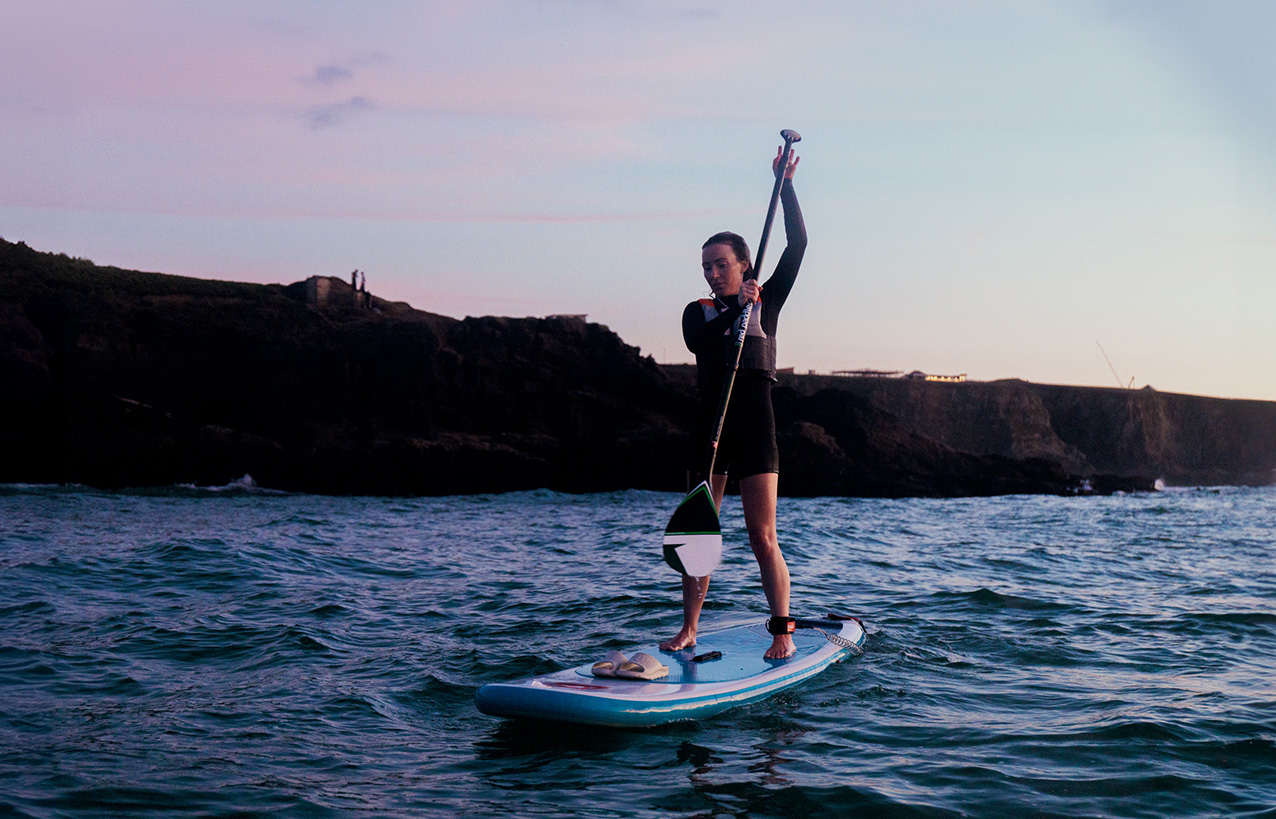
Check your equipment
Taking the time to check your equipment is functioning as it should be will make your time on the water safer and more enjoyable. There are also some essential pieces of kit you should take with you every time you go paddleboarding.
Check your paddleboard: There are a wide range of paddleboards on offer and much of it is down to personal preference, but the most important thing is to make sure it’s fit for purpose and pumped to the correct PSI. Checking your paddleboard for holes and making sure it will stay inflated is essential before heading onto the water.
Always wear a Personal Flotation Device: Having a regularly-serviced and working personal flotation device (PFD) is essential for water safety. Studies have shown that wearing a lifejacket can increase your chances of survival by up to fourfold when immersed in cold water. Always wear one. You can learn more about life jackets and personal flotation jackets here.
Take your phone with you: Make sure you carry your phone whilst paddleboarding so you can raise the alarm if you get into difficulty. Waterproof pouches are an affordable way of protecting your phone, whilst making sure it is available if you need it. In a coastal emergency call 999 and ask for the coastguard and if you are inland ask for the Fire & Rescue service.
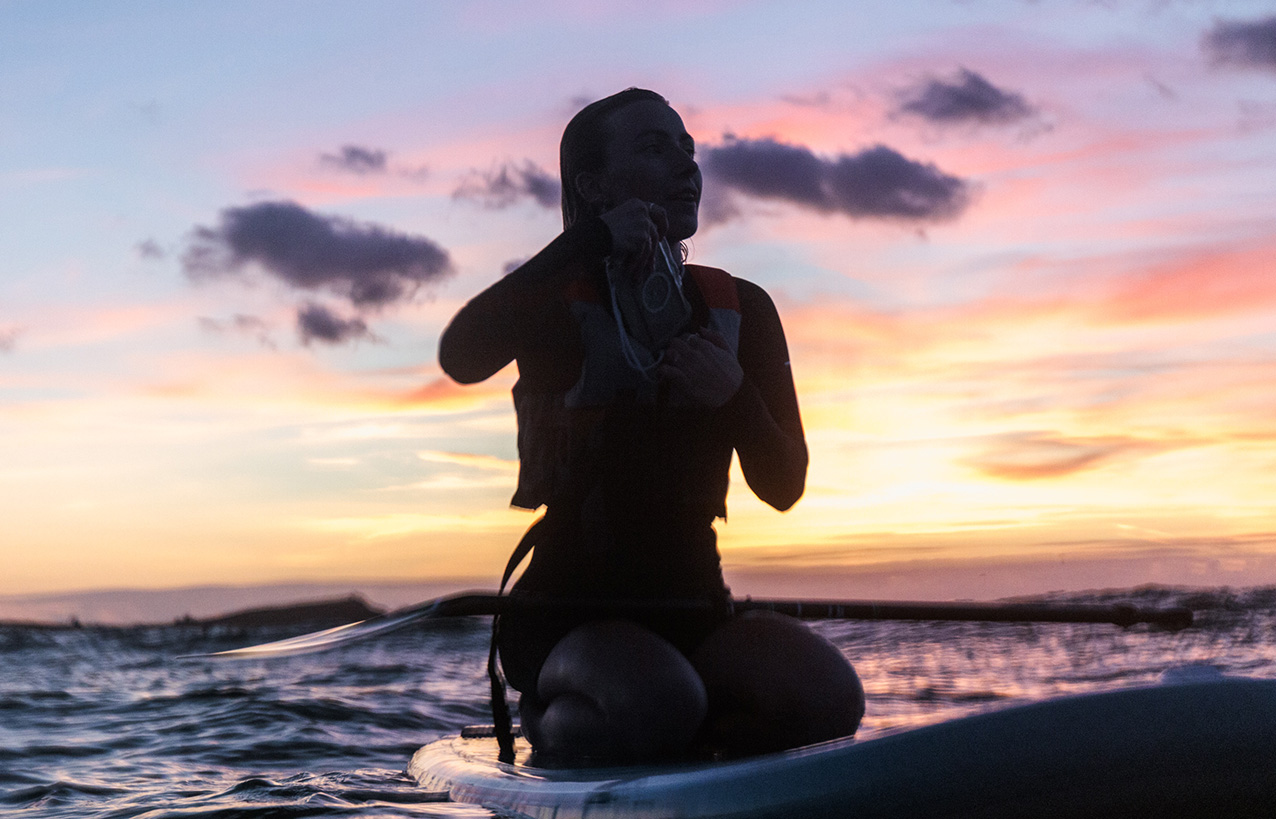
Wear the correct leash: A leash helps you stay connected to your board if you fall off. This will help you stay afloat if you get into trouble. Choosing the correct leash is important and will depend on where you are paddling. An ankle leash is appropriate for ocean and lake use, however if you are paddling in tidal or flowing waters where there is the possibility of getting caught on something, wear a quick-release waist leash instead.
What to wear: Even on a warm summer’s day, UK waters are cold, especially if you come off your board unexpectedly. It is still possible to get cold water shock in the warmest parts of the year. Dress as though you will be in the water, preferably by wearing a wetsuit. In the winter, a wet suit or a dry suit is an essential piece of kit.
Tell someone where you’re going
Sharing adventures with others always makes them more fun. Organise to paddle with a group of friends, a local paddleboarding school, or at least one other person. This makes the experience more enjoyable, but also means there is help on hand if you get into trouble.
If you can’t find someone to go with, be sure to tell someone where you’re going and what time you’re going to be back. That way they can raise the alarm if you don’t make it back to shore in time.
Never paddleboard alone without your phone, or a way of calling for help if needed.
What to do if you get into danger
Even if we prepare properly, it is possible for things to go wrong. The most important thing is to stay calm, so you can think clearly about how to stay safe.
Keep afloat: Conserve energy and heat by staying on your board. This is the best way to stay safe when running into risks.
Float to Live: If you end up in the water unexpectedly, or lose your board, then float on your back with your ears submerged. Calm your breathing and relax your body until you recover from the shock.
Call for help: Use your phone or communication device to raise the alarm. Call 999 and ask for the coastguard and if you are inland ask for the Fire & Rescue service. If you’re using a hand-held radio, make a distress call using channel 16.
“Stay with your board as it provides flotation and use your means of calling for help to alert the coastguard. If you find yourself without your board and in trouble in the water, remember to Float to Live. Tilt your head back with ears submerged, relax and try to control your breathing, and move your hands to help you stay afloat. Once you are over the initial shock, call for help or swim to safety. In an emergency, call 999 or 112 and ask for the coastguard.” – Abby, RNLI Lifeguard
Practice makes perfect
Whilst it may seem like there’s a lot to think about before paddleboarding, following the steps in this guide will help you to get used to practicing safe water usage. Over time, you will become more confident and be able to anticipate risks more readily. Until you feel confident, remember to go with paddleboarding schools and experienced water users. Remember, it’s supposed to be fun, not dangerous.
Becky wears the ADB & Apres Fish
Find your nearest RNLI lifeguarded beach here.


